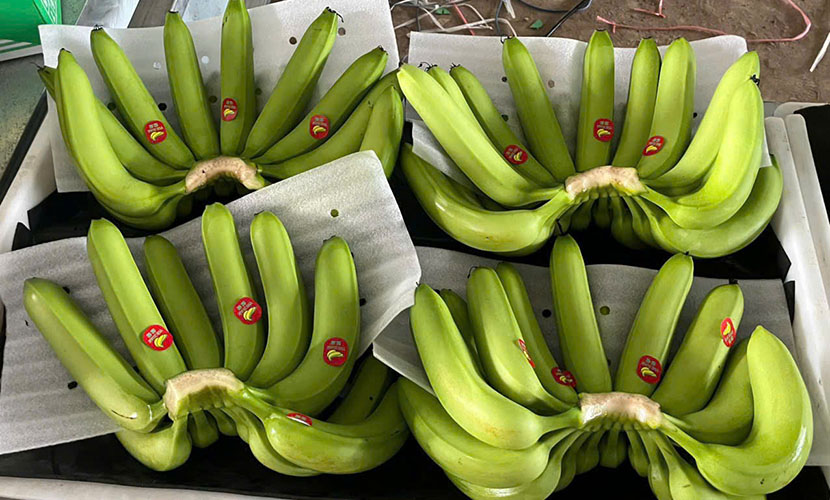
Bananas are one of the most important fruits in Vietnam. It has played a significant role not only in domestic consumption but also as a potential export commodity. With large production volumes, Vietnam’s banana exports have made their presence on many markets.
However, to ensure sustainable development and fully exploit export potential, Vietnam’s banana industry must overcome numerous challenges. This article will analyze the current state of Vietnam’s banana exports, highlighting advantages and difficulties. Accordingly, we propose solutions to enhance competitiveness and ensure sustainable growth for the industry.

Vietnam’s banana exports
In recent years, Vietnam’s banana exports have made remarkable progress. Bananas are one of the top three key export fruits of Vietnam, alongside dragon fruit and mango. The main export markets for Vietnamese bananas include China, Japan, South Korea, several Southeast Asian countries, and the Middle East.
Notably, the signing of a protocol on the export of fresh bananas to China at the end of 2022 opened significant opportunities for deeper penetration into this billion-people market.
Despite these achievements, Vietnam’s banana exports still face many difficulties. Export prices for bananas often fluctuate and are highly dependent on a few specific markets, especially China. This dependency makes it difficult for banana farmers and exporting businesses to stabilize production and business operations.
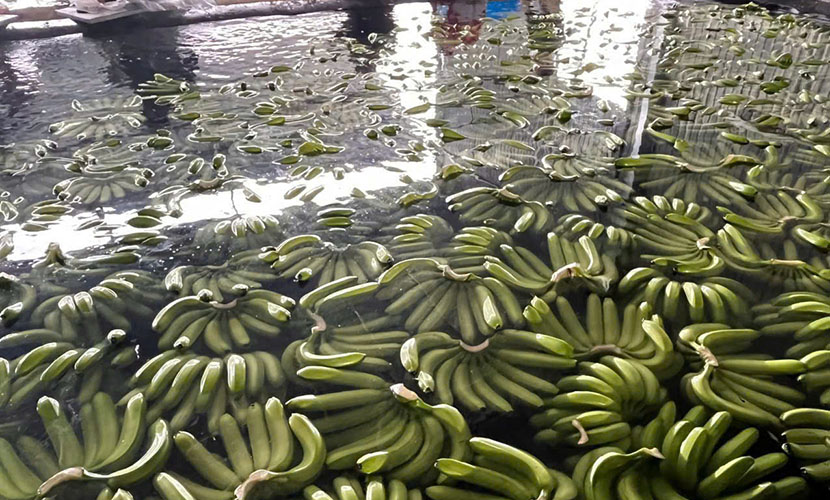
Vietnam’s banana washing process
Also, the quality and appearance of Vietnamese bananas remain inconsistent. Specifically, they often do not fully meet the strict standards of premium markets. Additionally, Vietnam’s banana brand and reputation in international markets remain weak. As a result, it difficult for them to compete with major rivals like the Philippines and Latin American countries.
Vietnam has many favorable conditions for banana cultivation, including suitable climate, soil, and experienced farmers. The country’s banana output is relatively large, meeting both domestic consumption and export demand. Its advantageous geographic location also facilitates banana transportation to nearby markets, reducing costs.
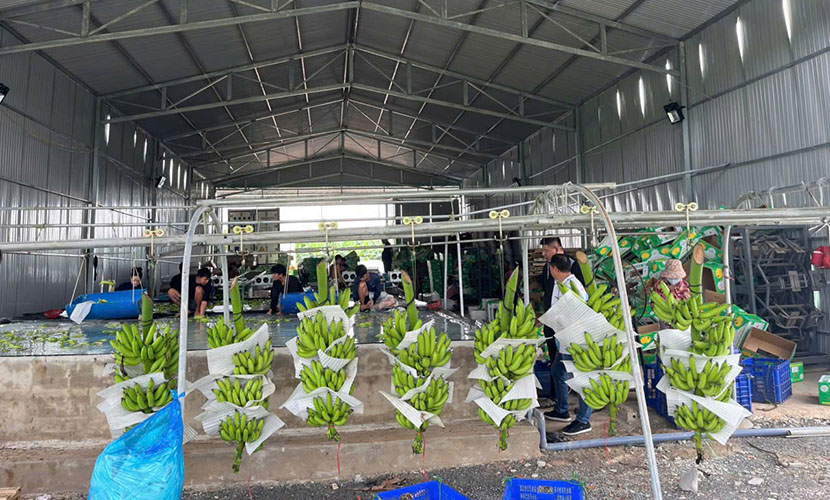
Vietnam’s banana cutting process
Global demand for bananas continues to rise due to growing awareness of the fruit’s health benefits. This presents a major opportunity for Vietnamese bananas to expand export markets. The fact that China has increased official import channels for bananas is also a positive sign for Vietnam’s banana industry.
However, one of the biggest challenges is Vietnam’s heavy reliance on the Chinese market. When this market fluctuates, domestic banana prices are also severely affected. This highlights the urgent need to diversify export markets to minimize the risks of overdependence on a single destination.
Banana production costs in Vietnam are still high, partly due to limited application of science and technology in cultivation. This reduces Vietnam’s price competitiveness compared to other countries.
Branding and marketing for Vietnamese bananas in the international market have also been weak. As a result, Vietnam’s bananas are less well-known and less impressive to global consumers.
Climate change is another major challenge for Vietnam’s banana sector. There are extreme weather events such as droughts, floods, storms, and diseases potentially affecting yields and quality.
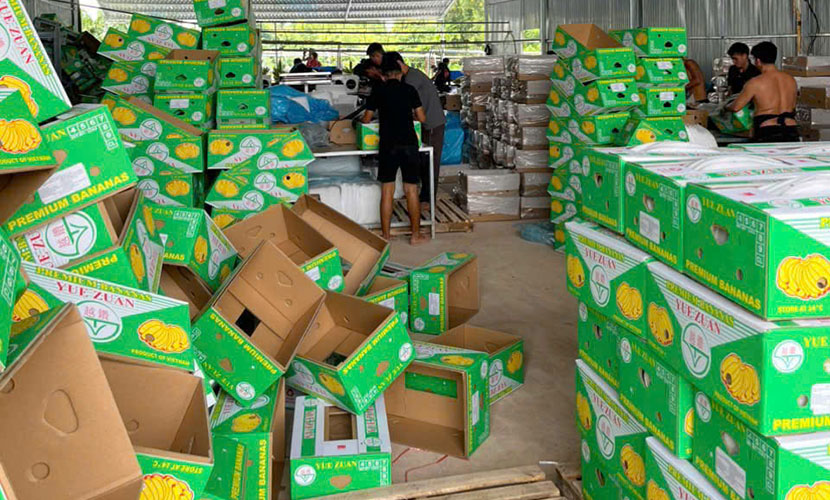
A factory of Vietnam’s banana exports
To improve competitiveness and achieve sustainable development for banana exports, the following synchronized solutions should be implemented:
Diversify export markets: Beyond China, Vietnam should actively promote trade and seek out other potential markets.
Adopt advanced production processes: Compliance with international standards on quality and food safety must be ensured so that exported bananas meet high quality and safety expectations.
Focus on regional markets: Given the perishable nature of fresh bananas, long-distance transportation can affect quality and increase costs. Therefore, focusing on nearby markets such as China and Southeast Asia is understandable. Reports also highlight that Vietnam has surpassed the Philippines, Ecuador, and others to become China’s largest banana supplier, indicating a heavy export focus on this market.
Apply science and technology in farming: Use high-yield, disease-resistant banana varieties and implement cost-saving cultivation techniques to improve production efficiency.
Build a global brand: Promote Vietnamese bananas internationally through advertising, trade promotion, and participation in global trade fairs and exhibitions.
Establish strong value chains: Develop close linkages between farmers, processing enterprises, and exporters to ensure shared benefits among all stakeholders.
Adapt to climate change: Research and apply farming techniques that adapt to climate change, such as drought- and flood-resistant banana varieties, water-saving irrigation systems, and effective disease control methods.
Invest in banana processing technologies: Produce value-added products such as dried bananas, banana puree, or banana juice to increase export value.
Government support: Provide policies that support capital, technology, trade promotion, brand building, and create favorable conditions for banana export enterprises.
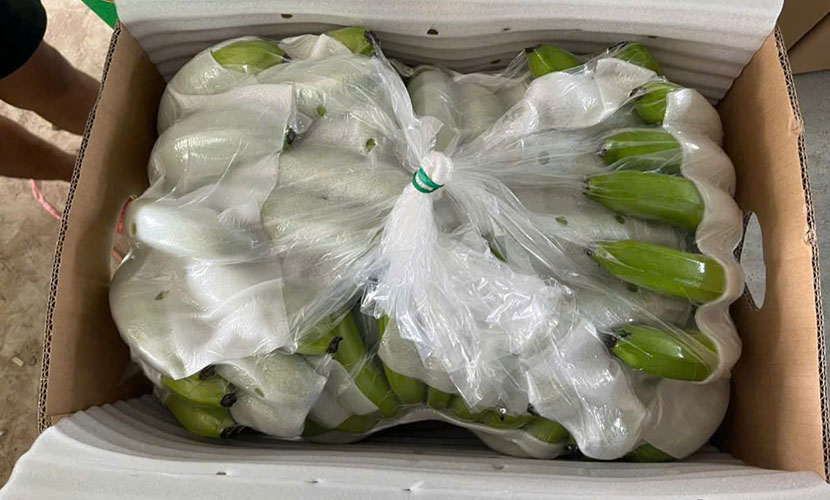
Vietnam’s banana carton boxes
Vietnam’s banana exports hold great development potential, but also face significant challenges. To fully tap into this potential, close coordination is necessary among all stakeholders. They include farmers, businesses, and government agencies.
By implementing comprehensive solutions in quality improvement, Vietnam’s banana industry can grow sustainably and compete effectively in the international market, ultimately bringing economic benefits to both farmers and the country.
Vietnamese source: https://nongnghiephuuco.vn/xuat-khau-chuoi-viet-nam-con-duong-phat-trien-van-gap-ghenh-4610.html
